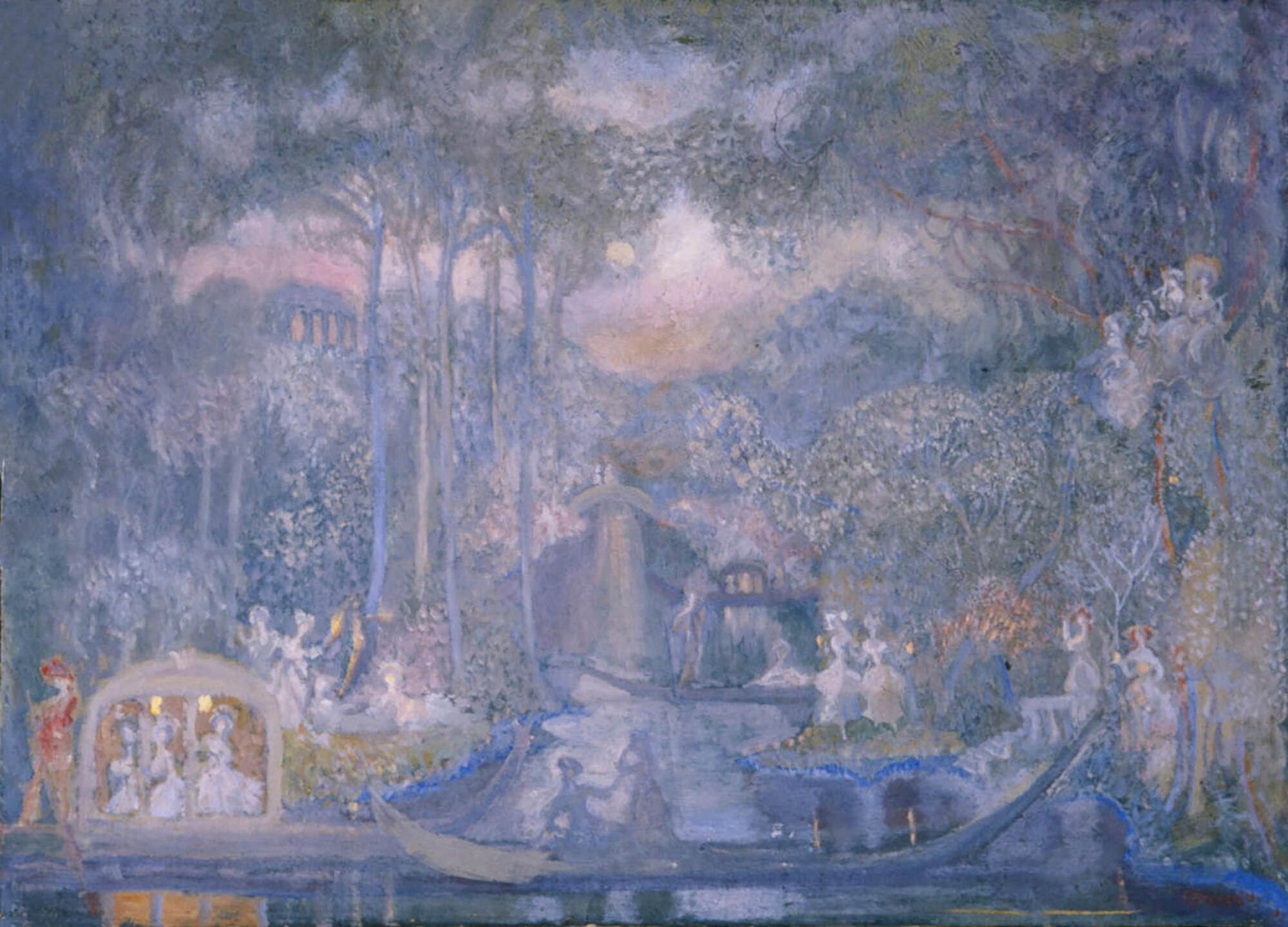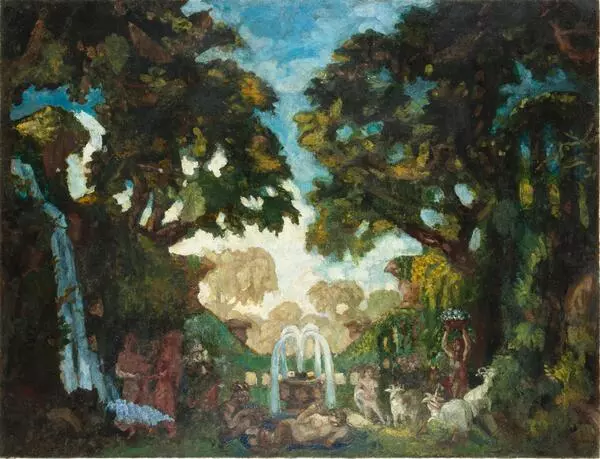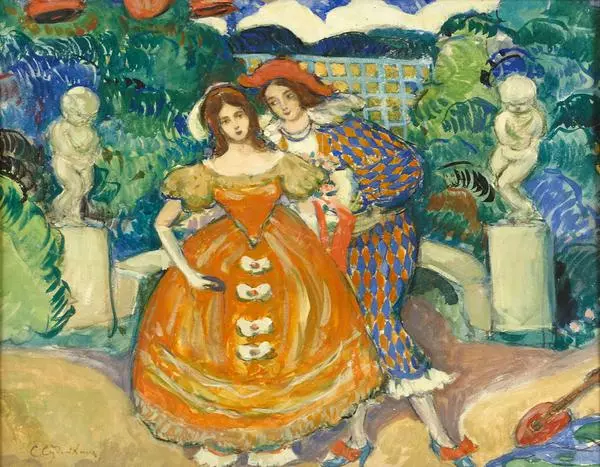“Marquise Walking to the Love Isle” is a painting by the little-known Russian artist Sergey Sudeikin.
Almost nothing is known about the childhood and family of Sergey Sudeikin. When the boy was only one year old, he lost his father who had served as a lieutenant colonel in the security police and had been brutally murdered. According to his contemporaries, the future artist’s father was a man of exceptional intelligence for which he was dubbed “a genius detective”. He was also an innovator, a great mystifier, adventurer, and swindler. Many of these qualities were also inherent in his son Sergey who was very talented, liked to provoke and mystify, and, just like his father, always strove to be more skilled, talented, smart, and successful than everyone else.
Sergey Sudeikin studied under Konstantin Korovin, Valentin Serov, and Dmitry Kardovsky. He began mastering the basics of art at the Moscow School of Painting, Architecture and Sculpture. In 1902, along with two friends, he was suspended for a year for “the obscene and explicit content in his paintings.” Over the 10-year-long period of study, Sudeikin won recognition in Moscow as a scenic designer. It is this aspect of Sudeikin’s talent that made him a leading theater artist later on. In 1920, the painter left Russia.
On March 18, 1907, an exhibition designed and organized by Sergey Sudeikin opened in the house of the porcelain manufacturer Kuznetsov on Myasnitskaya Street in Moscow. The exhibition was named “The Blue Rose”, apparently by the poet Valery Bryusov. It sparked the beginning of the Symbolism movement in Russia, and its representatives became known as “the Blue Rose artists”. The exhibition’s name also turned into a metaphor that came to define the main stylistic features of the new association: the attempts to create an intimate atmosphere and depict the intangible, the subtle sensations, feelings, and emotions. The paintings of these artists created a world of dreams and visions, imbued with both joy and bittersweet nostalgia.
Both the first exhibition of the “Blue Rose
artists” and the subsequent ones were held in halls decorated with flowers and
silver and blue fabrics. The art critic Sergey Makovsky said about the
exhibition,






